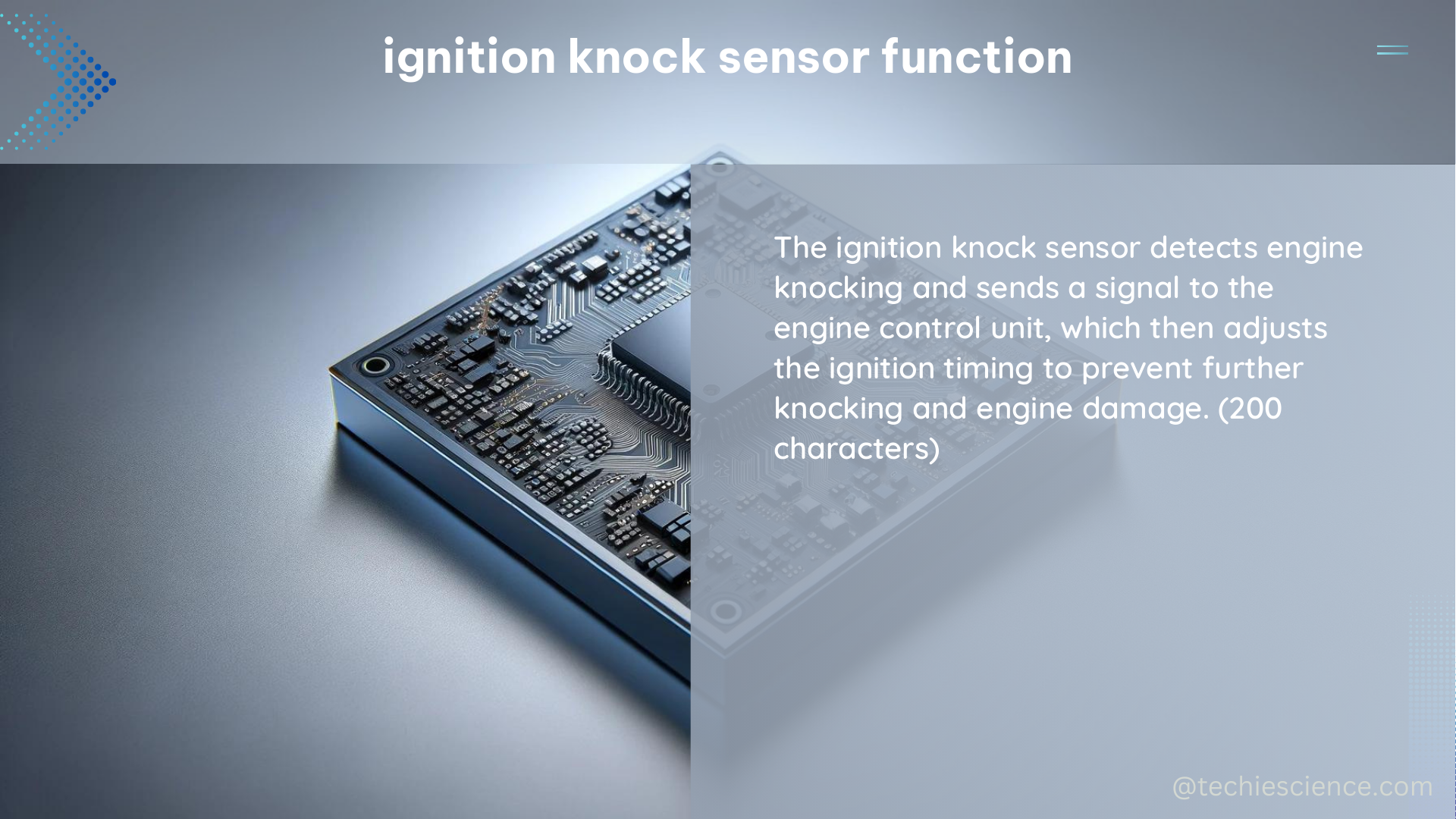The ignition knock sensor is a critical component in modern internal combustion engines, responsible for detecting and preventing engine knocking or pinging, a phenomenon that can lead to severe engine damage if left unchecked. This sensor is strategically positioned on the engine block, meticulously “listening” for structure-borne vibrations generated by the engine and converting them into electrical voltage signals.
Understanding the Knock Sensor Signal
The voltage signals produced by the knock sensor are carefully filtered and evaluated by the engine control unit (ECU). When the ECU detects the presence of knocking, it promptly adjusts the ignition timing for the respective cylinder to mitigate further knocking. A malfunctioning knock sensor can manifest in various ways, including the ECU registering a fault and implementing an emergency program strategy to protect the engine.
Wiring Checks for Proper Functionality
To ensure the knock sensor is functioning correctly, it is essential to thoroughly inspect the wiring connecting the sensor to the control unit. The resistance between the knock sensor connector and the removed control unit connector should be less than 1 Ohm, indicating a continuous and uninterrupted circuit. Additionally, the resistance between the respective pin at the wiring harness connector and ground should be at least 30 MOhm, confirming the absence of any short circuits.
Advanced Diagnostics with an Oscilloscope
For more advanced diagnostics, an oscilloscope can be utilized to observe the signal generated by the knock sensor. A clear signal with a significantly amplified amplitude should be visible, indicating the sensor is properly detecting vibrations. If knocking is not detected, this may suggest a defective sensor or an issue within the associated electrical circuit.
Technical Specifications of the Knock Sensor

The ignition knock sensor typically generates an AC voltage signal with a frequency range of several kilohertz, depending on the specific operating conditions of the engine. The sensitivity of the sensor is usually in the range of a few millivolts per kilohertz of vibration frequency, allowing for precise detection of knocking events.
| Specification | Typical Range |
|---|---|
| Frequency Range | Several kilohertz |
| Sensitivity | Few millivolts per kilohertz of vibration frequency |
| Response Time | Microseconds |
The sensor’s response time is typically in the order of microseconds, enabling rapid detection of knocking events and prompt adjustments to the ignition timing.
Importance of the Knock Sensor
The ignition knock sensor plays a crucial role in protecting the engine from the detrimental effects of knocking or pinging. By continuously monitoring the engine’s vibrations and adjusting the ignition timing accordingly, the sensor helps maintain optimal engine performance and prevents potential engine damage.
Proper installation, thorough wiring checks, and advanced diagnostics using an oscilloscope are essential to ensure the knock sensor is functioning correctly. By following these best practices, you can help safeguard your engine’s longevity and performance.
References:
- Knock Sensor Read
- Knock Sensor Modeling and Diagnostics
- Car Knock Sensor Troubleshooting
- Knock Sensor Signal Analysis
- How Does the Knock Sensor Function?

The lambdageeks.com Core SME Team is a group of experienced subject matter experts from diverse scientific and technical fields including Physics, Chemistry, Technology,Electronics & Electrical Engineering, Automotive, Mechanical Engineering. Our team collaborates to create high-quality, well-researched articles on a wide range of science and technology topics for the lambdageeks.com website.
All Our Senior SME are having more than 7 Years of experience in the respective fields . They are either Working Industry Professionals or assocaited With different Universities. Refer Our Authors Page to get to know About our Core SMEs.